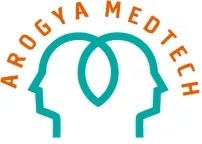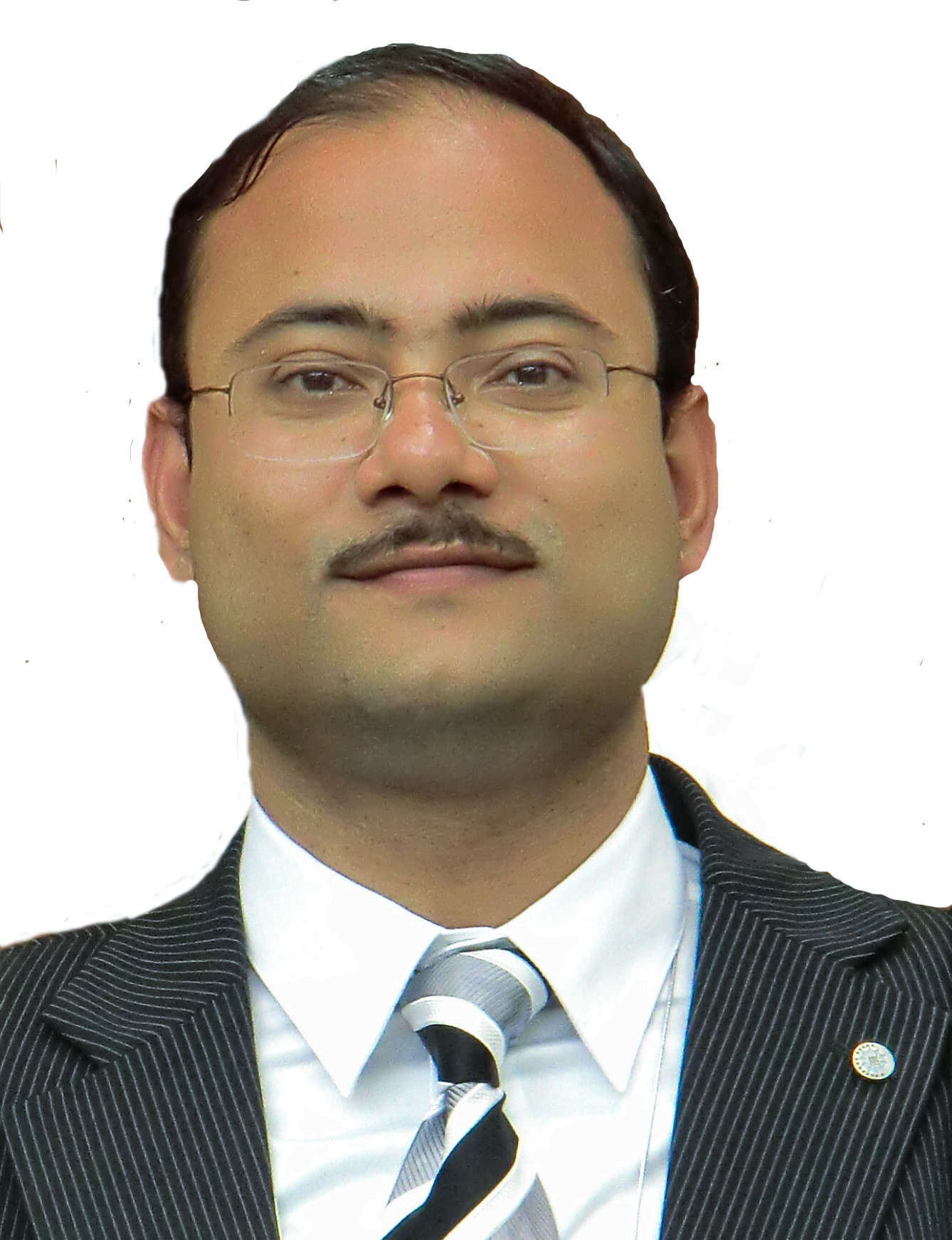Arogya Medtech's Profile

Arogya Medtech
Business Category: Healthcare
Founding Year: 2015
Startup Stage: Proof of Concept/Prototype
Support Required: Funding Mentoring
Structure of the Company: PVT Ltd.
Website: http://arogyamedtech.com
Business Overview
Executive Summary: Arogya MedTech has brought a novel and innovative solution to identify neurological problems with their flagship product, CEREBROS, which is a wearable neuroimaging solution using multi-modal technologies to continuously scan the brain. CEREBROS will help in early screening and triaging neurological emergency at point of care, specifically among High-risk population (Geriatric group). Any healthcare professional such as a General Physician, Nurse, Paramedic or Community Health Workers, can use it and help patients detect the advances in neurological interventions which need to be administered within the golden-hour.
Product/Service description: CEREBROS is a low-cost (approx. INR 50,000), portable, radiation free, multi-modal NIRS-EEG/EOG neuroimaging and continuous brain monitoring device at point-of-care enabling early detection of Stroke, Hypoxic-Ischemic Brain Injury HIBI among neonates and children, Traumatic brain Injury TBI as well as all type of Brain Injury/Trauma using big-data analytics on cloud platform. There is no existing technology that provides neuroimaging at the point-of-need accident site, home or during transfer ambulance, and patients miss crucial time "Golden hour" while traveling to "scan centers." CEREBROS technology leverages two well developed portable radiation-free neuroimaging modalities - electroencephalography EEG and near-infrared spectroscopy NIRS - for continuous point-of-need monitoring of the deleterious effects of brain injury. In summary CEREBROS is a highly miniaturized portable device integrated with a tele-neuromonitoring platform with the following critical technologies: 1.Portability ensuring early screening and triaging at point-of-care 2.Low Cost device (INR 50K compared to INR 2-5 Crores for CT/MRI) 3.No skilled technician required thus empowering any and all emergency healthcare providers 4.Non-invasive and Radiation free 5.Multi-modal Sensing (EEG+NIRS): High degree of Specificity & Sensitivity, resulting accurate result 6.Sensor fault tolerant embedded system making it the only neuroimaging device, that can be used in-transit 7.Continuous and Remote Monitoring 8.Using big-data analytics and Artificial Intelligence leading to Prognosis and Diagnosis of neurological emergencies (such as Stroke, Seizure, Brain Injury and Trauma) at point-of-care9.Under Software-As-A-Service(Saas) based revenue model providing brain scan at a fraction (1/10th) of CT/MRI cost.
Customers/Users: Potential customers will be: A. Emergency Services: 1. National Ambulance Service ( a.k.a. 108 Service ) which is executed by the State Government and financially supported by Central Government and State Government jointly under the National Health Mission project 2. City based emergency systems - Kolkata Medical Emergency System(Private) or CATS in New Delhi(Government) or ZHL in Mumbai (Private) as well as City Municipal Corporation Ambulances. 3. Private Ambulance organization with small fleets of ambulances (1 to 10 ambulances) – In Kolkata Itself, there are 110 such organizations which operate approximately 350 ambulances across the city that includes Greater Kolkata and Howrah. 4. Local Fire Engines primarily run by local government authorities (such as, City Municipalties, Block , Sub-Divisions and District fire department) B. Government owned Public Health System which works under a tiered step-by step “Referral Model”: Government Health Centers ( Rural Sub Center - SC, Primary Health Centres- PHCs, Block Primary Health Centres – BPHCs) and Government Hospitals (e.g.: Rural Hospitals - RH, Sub-divisional Hospitals - SDH, District Hospitals - DH and Tertiary Hospital/Medical Colleges – TH/MC) works under a referral system. It refers any neuro-emergency to the next level. The path of referral is as following - SC => PHC => BPHC => RH => SDH => DH => TH / MC. C. Private HealthCare facilities: Private Nursing Homes, Small Hospitals, Diagnostic centers in urban and rural areas, which cannot afford to have CT/MRI machines and don’t have access to skilled technicians can also deploy CEREBROS and do a proper screening and triaging, followed by referral to the appropriate nearest hospital as explained above. D. Large Private Hospital network, who works under a Hub and Spoke model: The hub (The multi-specialty hospitals in city, such as Apollo Healthcare, AMRI, NH Hospitals) can deploy CEREBROS at the spokes (the centers in Tier II, Tier III cities and in rural areas) as the point-of-care screening tool for early detection, thus reducing time for intervention (The triage process). E. Defense services/Military: Neuro-emergencies causing brain injury in War zones are major source of mortality and morbidity. In a conflict area (e.g: war zone, border area), blasts causes many internal brain injury and trauma. Most of the stations and outposts have only few air-ambulances. The Military can deploy CEREBROS in these Military out-posts. A quick scan with CEREBROS will decide which soldier should be evacuated first and taken to the Trauma center asap. F. Remote construction sites, mining area and offshore places (both Government and Private Corporations) – Again, though due to the nature of the job, these areas have high probability of of accidents causing brain injury, generally brain scanning facilities are not available in the vicinity due to remoteness of the job sites. As such, these are ideal candidate for CEREBROS deployment. G. Finally, specifically in India and developing countries, where individual General Physician including Rural Doctor, who attends the patient first in a neurological emergency, will be a prolific user of CEREBROS, if the service is provided at an affordable pay-per-scan model. (The scan will be is 1/10th - 1/20th of the cost of CT or MRI)
Current traction: The need of the beneficiaries (Neuro-emergency patients) and the gaps for the problem is well documented in Neurological Epidemiology studies. One of them in India has been done by their Co-Founder Dr. Das. In 2012, Neurologist Dr.Das published a seminal paper "Neurologic Disability:A Hidden Epidemic for India"(Neurology.2012;79:2146–47) where he identified emerging epidemic of neurological disability in India, affecting 3.5 million people annually. They have also done a survey among the Users and Customers, specifically among the Neurologists with following survey result: 1. Only a very small number of Neurologist (10%) mentioned using EEG as the only point-of-care device for brain scanning, but that only for Epilepsy purpose. 2. 100% responders mentioned the need of a point-of-care, portable brain scanning technology for early screening and triaging of neurological emergencies, such as Stroke, TBI, HIBI, HIE as well as for brain function status for Neurodegenarative disorders, such as Vascular Dementia. 3. 100% responders agreed “continuous brain monitoring” will be added benefit. 4. The few neonatologists who participated in the survey, agreed that, in case of HIE and HIBI among neonate, the early screening and any physiology-based treatment like hypothermia at remote point-of-care for "intact survival" under continuous brain monitoring by ASHA worker or ANM nurse will be a huge public health impact.

